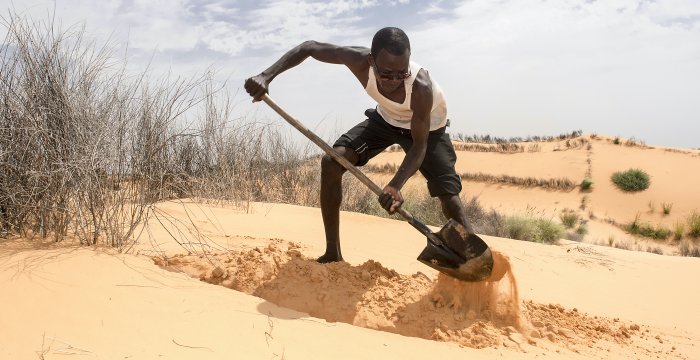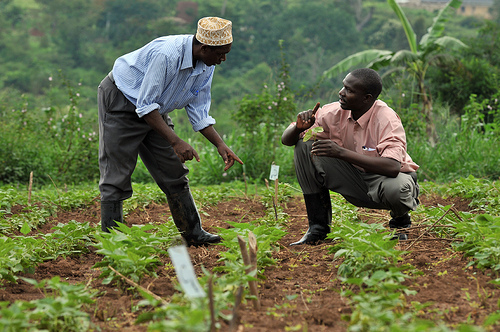William Ruto was sworn in as Kenya’s fifth President in September after the Supreme Court upheld his electoral victory, which was challenged by his opponent, Raila Odinga.
The President, who tagged himself as a ” hustler ” is now faced with tackling an economic crisis which has increased the cost of food and fuel, unemployment and the level of public debts.
While these would not come as surprising for President Ruto, who held the position of Vice president for nine years under the last administration, it has prepared him to develop a strategic blueprint through which the economy of Kenya can be managed effectively and reset on the path of growth.
This economic blueprint, among other things, focuses on growing the Kenyan economy and drawing the country out of its current debt situation, which has increased more than average in the last few years.
To achieve these, President Ruto plans to adopt a bottom-up economic model which would help grow the local economy by supporting the Micro, small and medium-scale enterprises, MSMEs, and casual workers who dominate the informal sector of the Kenyan economy.
To this end, he has pledged to create a $420 million per annum ‘Hustler fund’ to extend affordable credit to MSMEs as well as grant a trading licence and location to anybody who requests
one.
The bottom-up approach will also include scaling up agricultural activities as the President intends to cut agricultural imports by 30%, thereby raising productivity through new capital and financial management instruments.
President Ruto believes more attention and priority should be given to the agric sector owing to its potential for high and quick returns on investment and its role as the lead sector in the transformation of the Kenyan economy.
Presently, agriculture accounts for about 23% of Kenya’s GDP, and to further improve on this; the present administration has mapped out a short to a long-term plan to maximise inputs from the sector.
For short-term measures, the government of President Ruto plans to increase agricultural productivity by enabling farmers to get easy access to quality inputs such as seeds, fertilisers and pesticides, while in the medium term, the government plans to have fertilisers manufactured locally in collaboration with the East African Community countries.
The long-term plan is targeted at putting more land under irrigation through the construction of 100 dams under a public-private partnership to irrigate three million hectares of identified arable land.
President Ruto plans to invest at least Sh250 billion in five years, effective 2023, to boost Agriculture and food security.
These measures, alongside some others in the sector, are expected to provide substantial relief from poverty and insecurity, which in turn will increase agricultural productivity and lead to an increase in foreign exchange earnings as well as an increase in the contributions of agriculture to the nation’s Gross Domestic Product, (GDP).
With digital innovations doing wonders in the growth of economies worldwide in recent times, the Kenyan President’s plan also intends to leverage technology to access private sector innovations.
The President has therefore called on financial institutions and the youths in the country to become active participants in the digital economy by designing their products to support the effective implementation of the “Hustler Fund”, which seeks to empower as many as possible.
The government also plans to establish Kenya as an African digital hub for which it intends to allocate $400 million, representing a broad tech strategy that will encourage developing digital software with export viability.
With that, with its high-tech capacities, Kenya can achieve its dream of becoming an innovation hub for tech products and a force to reckon with globally to the advantage of its economy.
For taxation, the President has pledged to establish a progressive income tax regime whereby wealth would be properly taxed. In contrast, trade which has been overtaxed in the past can be relieved, and the tax system can be more responsive to the needs of the economy.
This will mean amending Kenya’s income tax system to ensure that high-earners pay more to alleviate inequality.
Without wasting much time, the government, since its inception in September, has embarked on tax reform measures to ensure that every Kenyan above 18 years is brought into the tax bracket.
This is expected to increase tax collection to create a more financially independent country with fewer external borrowings and lesser debts.
While all of these strategies look well articulated in black and white, several criticisms are beginning to spring up against some of the policy reforms, especially that of the tax regime. Still, President Ruto believes that if well implemented, his economic blueprint should address the significant issues affecting the Kenyan economy and set it on a sustainable path of growth.
Whether these plans of Ruto would come through for the revival of the Kenyan economy or not then will only be a matter of time.


